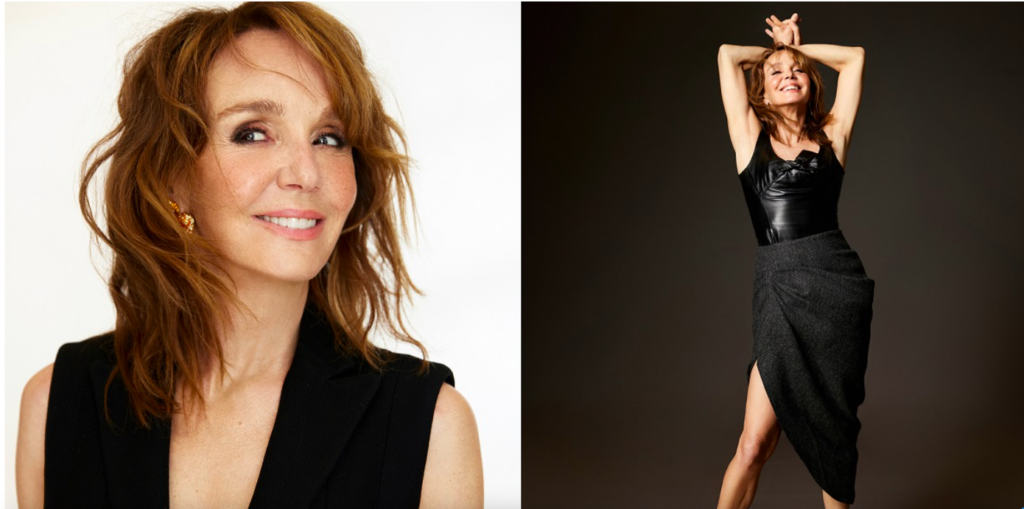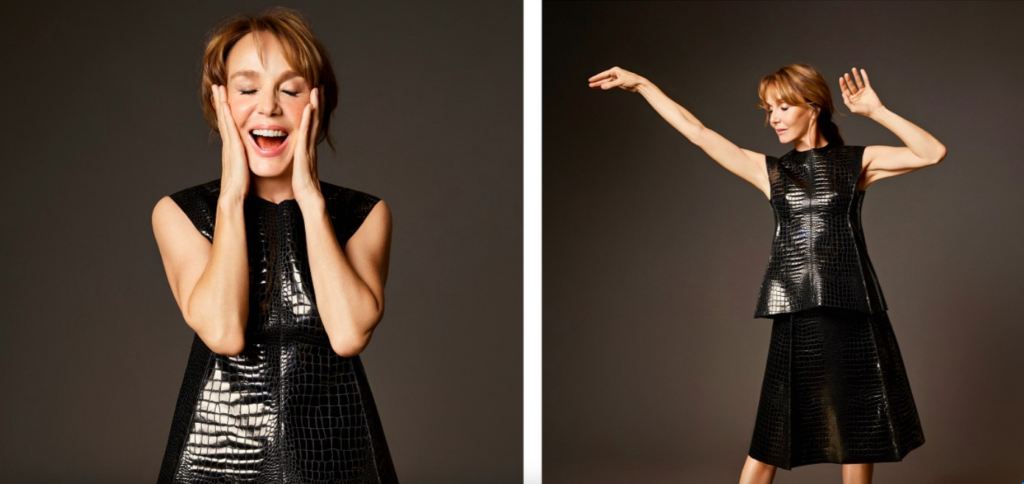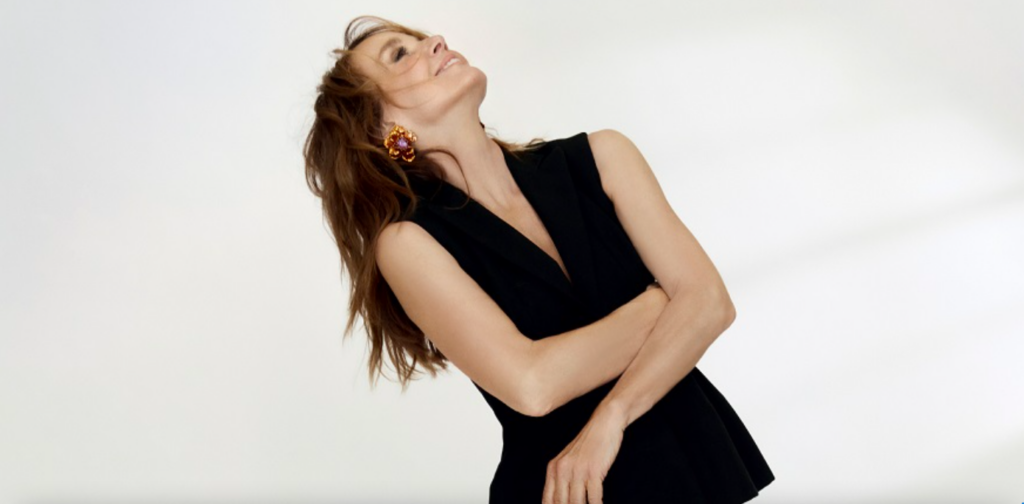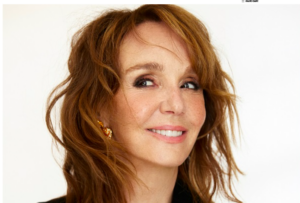She grew up immersed in fashion, surrounded by precious ornaments, leathers, spools of thread, intricate belts, and fine fabrics. The daughter of actor Philippe Leroy and Françoise Laurent, a model and jewelry/accessory designer for Dior, among others. Philippine made her screen debut four decades ago, with her first major success being the comedy “Three Men and a Cradle” (1985) as a young girl. Some may vaguely remember her from “Mistral’s Daughter” (1984), but she certainly stood out to those who enjoyed “Call My Agent” (2015). An actress who worked tirelessly for many years, her career skyrocketed in her calm fifties, thanks to the series “Emily In Paris,” where Philippine Leroy-Beaulieu portrays the French boss of the American protagonist, Lily Collins. Their main co-star? The city itself: Paris. Leroy-Beaulieu never hides her love for it. When asked if she has a favorite spot or neighborhood in the city of fashion and love (after I apologize for the clichés), she chooses the Seine River. “The river. My favorite place is the banks of the Seine, and my favorite activity is walking along the river. My walks along the Seine saved me during the lockdown. That’s my favorite spot in Paris. I love how the water flows through it. The atmosphere, the energy of the city, is different by the river.”

From the first episode of “Emily In Paris” when you introduced us to Sylvie Grateau, we saw a stern, fearless woman who doesn’t mince words, inspires fear, owes no one any explanations, and is incredibly sexy. What kind of woman do you see when you watch Sylvie on screen?
I see a woman who is both strong and vulnerable at the same time, courageous but also a bit more lost than the decisiveness she seems to project. She is very bold but also very lonely. (laughs)
Lonely? A woman with flirty lovers (younger and successful, often both) and a handsome husband?
Sylvie is a paradox, a woman full of contradictions, and that’s exactly what I love about her. Sure, her love life is complicated; she’s in an open relationship… In the second half of the fourth season, we see many things happening in Sylvie’s personal life. She’s a bold, fearless woman fighting for her values, and I love her for that. This season clearly reveals Sylvie’s “wounds,” which perhaps were not as visible in previous seasons. She questions her choices and her life up to this point. I love how Darren (Darren Star, the creator of the series) wrote her. From the start, we see a life warrior, but as we get to know her better, there’s an opening in her armor, and we see she’s been hurt. She’s a strong woman standing on her own despite her wounds. We see a woman who seemingly has it all questioning her life. I also love how the show often disrupts its seemingly smooth stories, throwing everything into chaos suddenly. Darren loves doing that, making the storylines more interesting and certainly more exciting.

“Darren Star told me he cast me as Sylvie because I was the most vulnerable of all the actresses he saw for the role.”
Hearing you speak so fondly about Sylvie’s vulnerability, I think you might love her vulnerable side more than her strong one. Am I right?
It’s interesting you say that because Darren and I had a conversation about this during the second season. He asked me, “Do you know why I chose you for the role? Why I singled you out at the audition? Because you seemed so vulnerable. You were the most vulnerable of all the actresses I saw for the role.” So this vulnerability is an important part of Sylvie’s character. Darren knew he wouldn’t get a one-dimensional strong woman from me; he saw I could bring out the different layers of this character. Sylvie has many layers; she’s a beautiful paradox. I think the casting worked out perfectly. It’s important to see beyond the obvious, to notice what a woman radiates but also what she might be hiding, even if it’s something completely contradictory. Isn’t that how life is? Full of contradictions.

Since you mentioned Darren Star, I can’t help but ask about another iconic female character he created, the amazing Samantha Jones from “Sex and the City.” Could these two women be friends? Do you see any similarities in their characters?
Yes, I might see some similarities. For example, both women owe no one any explanations, they’re extroverted and confident in their views. But they are very different characters. I don’t think they share the same life goals. However, their boldness might be something that connects them.
Photographer: Sarah Krick, Styling: Clément Lomellini
“Emily In Paris” is, in many ways, a series about love. Did Sylvie’s role make you reflect on love and relationships in ways you hadn’t before?
No, I don’t think so. I could never be in an open relationship, for any reason. (laughs)
That wasn’t exactly my question, but I understand.
I mentioned that because that’s what everyone talks about. Sylvie has an open marriage. She’s trying to navigate this kind of relationship, which works perfectly for some people: an open relationship that keeps the spark alive. But honestly, I don’t think I could ever do that. No gray areas for me, thank you. Let’s not forget we’re talking about a TV character. However, I’d like to make it clear that I don’t like talking about my private life. How one views love is a very personal matter.
“Of all the clothes I wore in ‘Emily In Paris,’ I loved a beautiful black Rick Owens dress from the first season and the Pucci dress in the final episode in Rome.”
If love is one of the main themes of the series, fashion is definitely the other. Let’s start with a question that might be impossible to answer: What was your favorite outfit from the series?
There were so many beautiful outfits, so many interesting pieces. You know, it’s been four seasons, I can’t even remember how many costumes I’ve worn. For us actors, costumes are something that help us get into character, and I emphasize that. Oh, in the first season, there was a beautiful black dress by Rick Owens. In this fourth season, I was eager to see Sylvie dressed in quieter clothes. After all, it’s winter, so I expected fewer bright colors. Also, since we learn more about Sylvie’s character this season, I wanted the clothes to be more discreet, so they wouldn’t overshadow her inner world, allowing us to see inside her without distractions.
I asked Marilyn Fitoussi (the costume designer of the series) to tone things down a bit. So Sylvie continues to be very elegant and wears gorgeous clothes, but without the extravagance and over-the-top outfits we saw in previous seasons, especially the third one. That said, I can’t help but mention the dress I wore at the masquerade ball, which I love, or the Pucci dress I wore in the final episode in Rome. There, Sylvie is almost a different person, a more liberated woman, and that is reflected in her appearance. I must repeat that these are not just clothes; they are costumes that must align with the character we see, with what they’re going through, the changes in their life. So I’m always very careful about how I move in these clothes.
Ask me anything
Explore related questions





